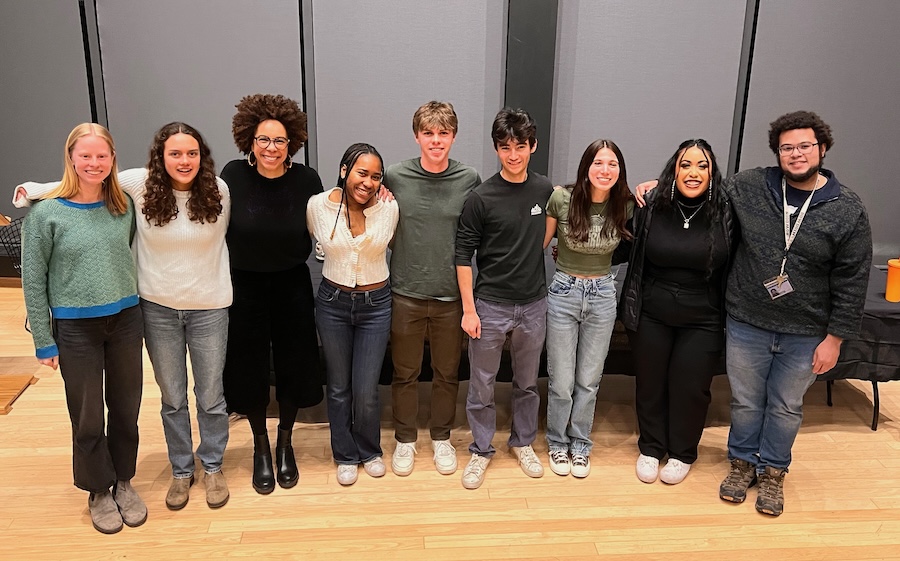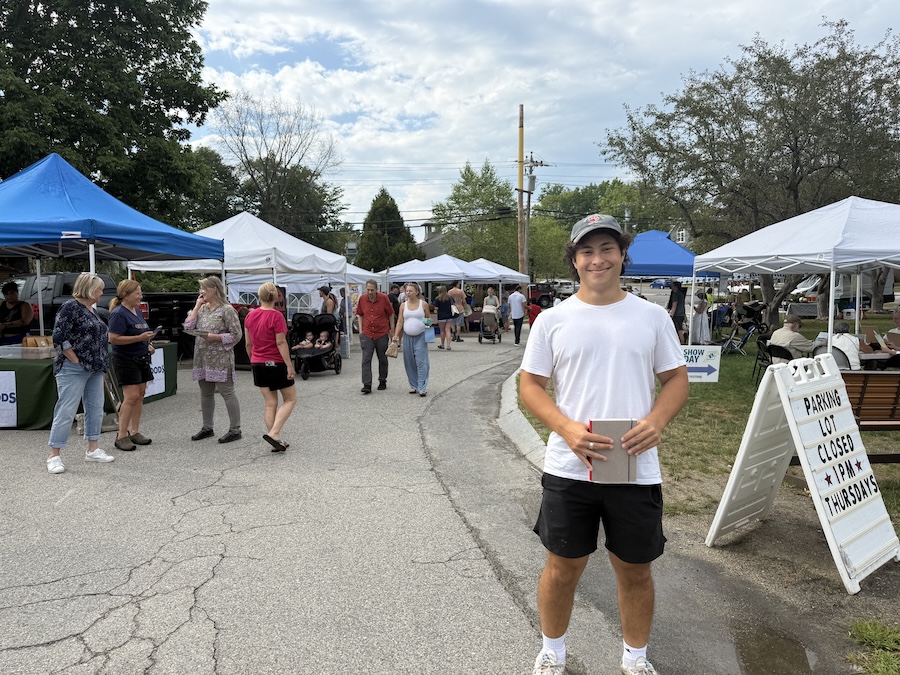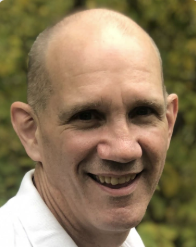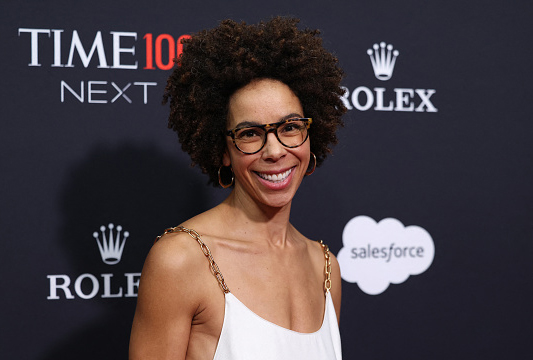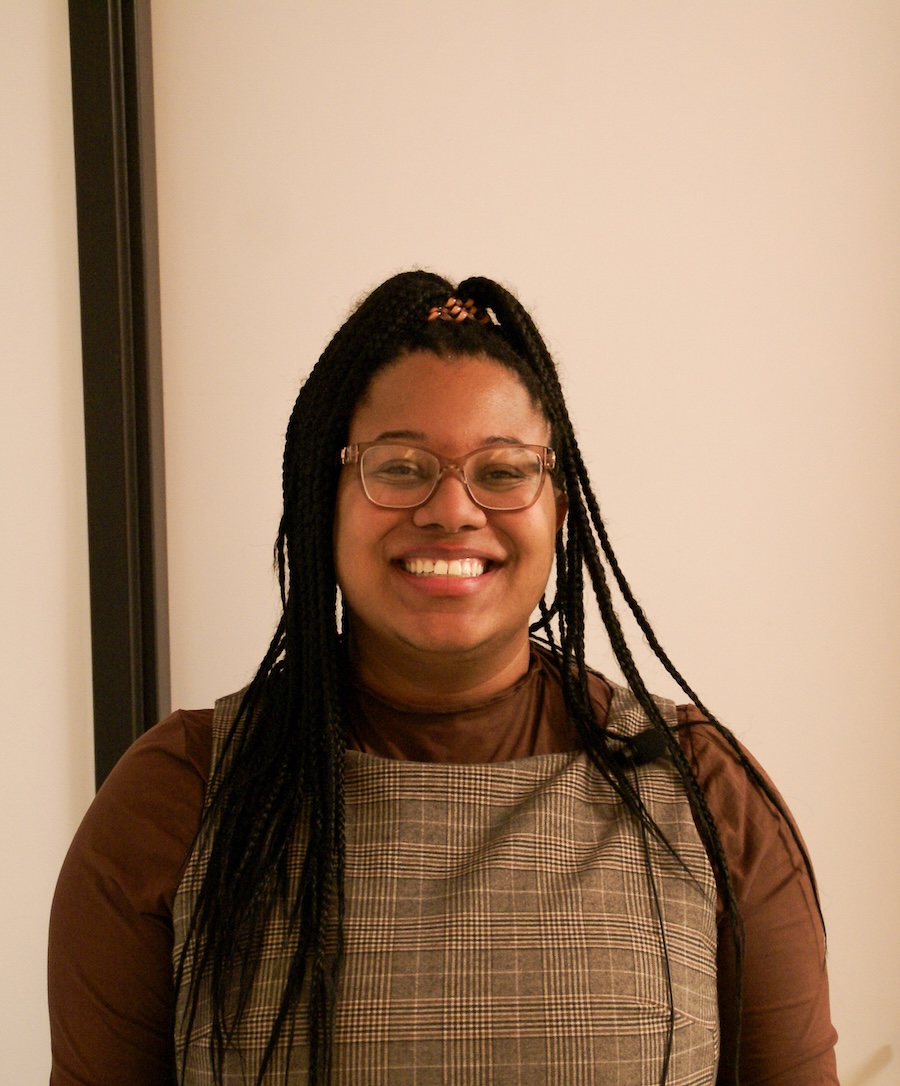Panel and Audience Discuss Joining the Environmental Justice Movement
By Lily Echeverria ’26Students, faculty, and community members gathered recently in the Roux Lantern to engage in a panel discussion about the meaningful involvement of all people in the decision-making and activities that affect human and environmental health.
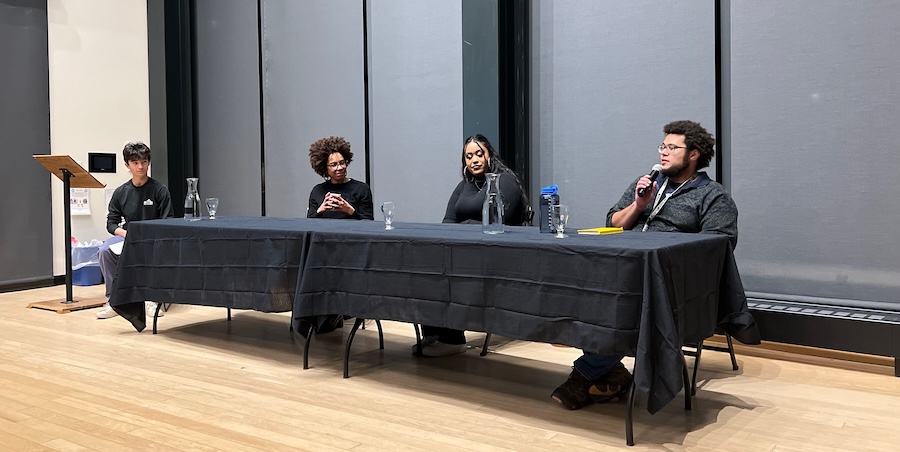
Panelists and audience members alike shared ideas for creating more sustainable communities and fighting environmental injustices.
The environmental justice movement arises from inequities of place in the US, where communities of color—for historic, economic, and/or discriminatory reasons—are often located closest to sources of pollution or are most at risk for hazardous conditions. The Natural Resources Defense Council defines environmental justice as "the right for everyone—regardless of race, color, national origin, or income—to the same environmental protections and benefits, as well as meaningful involvement in the policies that shape their communities."
The speakers at the February 21 event included climate justice expert Ayana Elizabeth Johnson, who has a three-year appointment at Bowdoin as the College's Roux Distinguished Scholar. She was joined by Assistant Professor of Earth and Oceanographic Science Jabari Jones, and Negina Lowe, the Maine Environmental Education Association's coordinator for its changemakers program.
Aaniyah Simmons ’26, a member of Bowdoin's Civic and Community Engagement Eco Rep team and director of culture and education for the Black Student Union, helped organize the panel as part of Bowdoin's commemoration of Black History Month. “A goal of ours is really just trying to get more Black students to feel like they can be involved in these movements,” she said in an interview after the event.
The panel, she explained, was an opportunity to emphasize the intersectionality of race, gender, age, and income in the context of equitable access to a healthy environment in which to live, work, learn, and grow.
“Something that’s very important to me about environmental work is that it's intersectional, so that my identity is still represented in the field,” she said. “So I’ve been very passionate about environmental justice, especially because I think it’s a way to get people involved who aren’t typically involved in environmental policy.”
Johnson agreed. She said at one point during the conversation, “A lot of times when people think about supporting environmental causes, they aren’t thinking about supporting environmental justice causes."
The panelists discussed their unique journeys into the environmental field, with each following twists and turns before settling into their respective disciplines. For Jones, it was an introductory college geology class that planted the seed for his scientific interests.
“I studied abroad in Peru, and that was the first time that I traveled out of the country, my first time seeing the ocean,” he said. “And I had this little kernel of geologic knowledge from my intro [to geology] class. I think having that little kernel, and being able to understand things even a little bit was very exciting.”
During the conversation, Johnson shared statistics she felt could alter people’s perceptions of the environmental movement.
“Black people care more about the climate than white people, which is a fact that not very many people know,” she said. “It is something that the Yale Center for Climate Change Communication has published along with George Mason University. They’ve been polling Americans on climate issues for over a decade now, and according to their polling, about 49 percent of white people are concerned about climate change, compared to about 57 percent of Black people and about 70 percent of Latino people in America.”
Johnson urged audience members to find common ground with those around them, and to build on these connections to help solve today's environmental crises. People, she said, are more similar than different. And though our world is "full of division right now," it's critical to overcome those barriers to nurture a healthful environment.
She advised students, in particular, to start from their own experience.“Talk from your perspective, and reflect and share the things that you have had the privilege to learn,” she said. “I think another part of that is recognizing that you already have connectivity, and you have power, even in your role as a student, to make change in the sphere that’s available to you."
While statistics such as the ones Johnson shared can spark a bit of hope, Lowe touched on the often negative impacts of that data, citing the benefits but also the shortcomings of using those indicators when communicating climate change.
“If numbers and statistics worked, we wouldn’t be in this room right now,” Lowe said. “We’ve been talking about numbers and statistics for years. I think a big thing that needs change is relationship-building, and prioritizing that before anything else.”
Simmons also noted how stressful conversations about the environment can be, and stated her desire for students to derive hope from the conversation rather than dread.
“I hope [students] are a bit more encouraged,” she said. “I think as [Lowe] was saying, the environmental justice field can feel a bit overwhelming or depressing, just because you’re always seeing these terrible statistics, and these terrible disproportionate rates at which people are being affected. We were hoping that this panel served more as an inspiration for work that equitably helps people.”
The event was hosted by the Bowdoin Sustainability Office’s Civic and Community Engagement team and Black Student Union.
